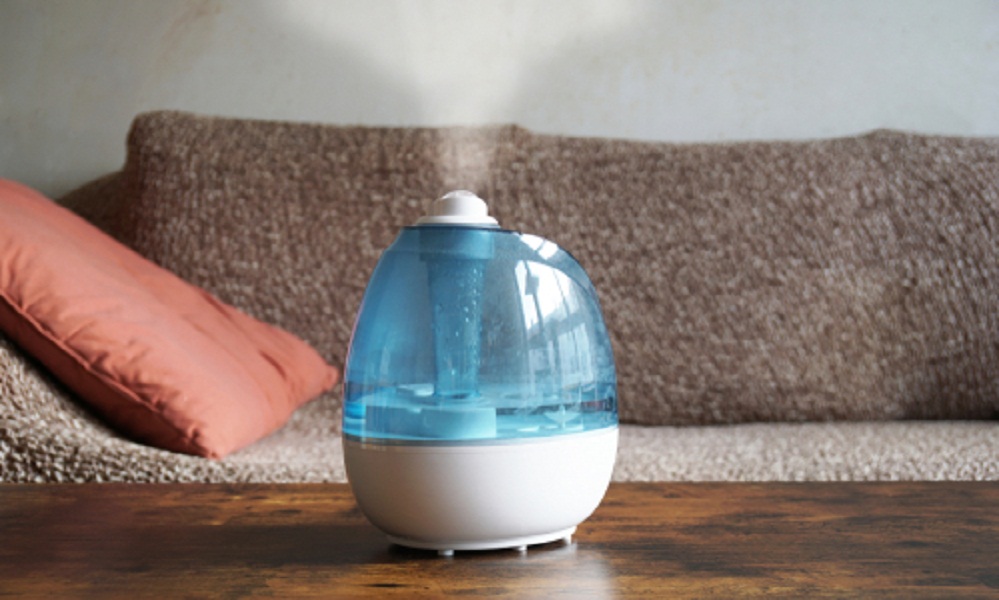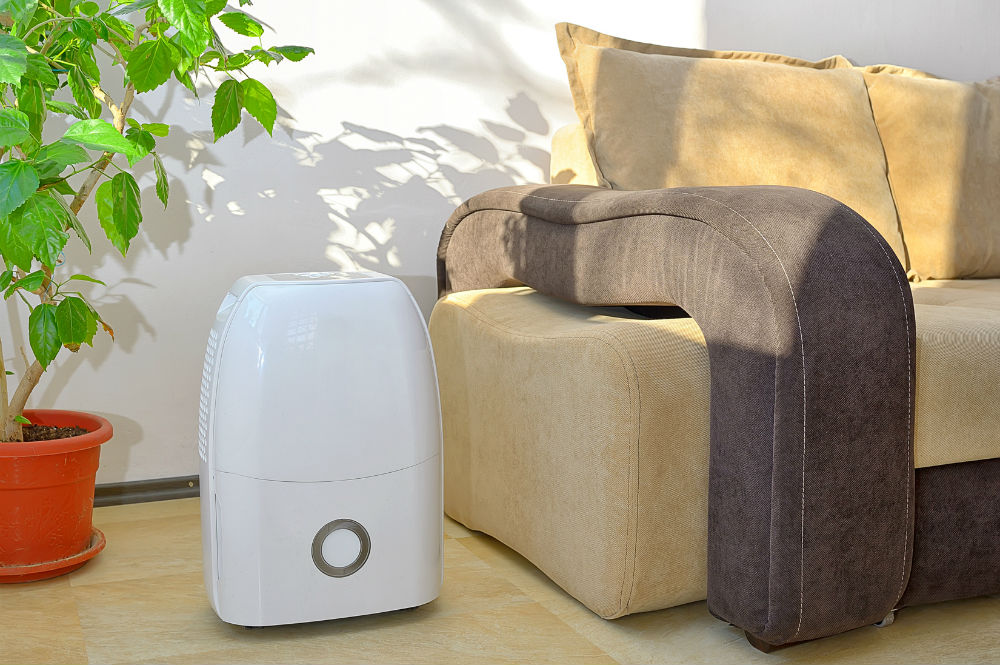When outdoor temperatures fall and you crank up your heat, the humidity level inside your home can quickly fall from pleasant to parched. A humidifier can help prevent or alleviate dry skin, according to the American Academy of Dermatology.
But excessive moisture is not good, either: Excess humidification can foster the growth of bacteria, mold, and dust mites. You need to get the balance right.
According to Energy Star, the perfect humidity level in your house is between 30 and 50 percent. It should vary from 30 to 40 percent in colder regions during the heating season to reduce window condensation.
But with so many versions out there, how can you select which humidifier is suitable for your home? Keep reading to discover about the different kinds of humidifiers available, and get tips on how best to pick a humidifier for your room size. Also, learn the aspects to consider when you go shopping.
Dry skin is the only reason experts recommend using a humidifier, a device that releases water to the air to improve moisture levels (humidity) in your house or office.
The National Institutes of Health recommends using humidifiers to alleviate congestion from the common flu, cold, and sinus infections. And humidifiers can also help relieve the symptoms of eczema, dry eyes, itchy skin, cracked lips, dry nasal passages, and nosebleeds because of dry air, asthma, or allergies.
In eczema or itchiness because of dry skin, a humidifier can do more than alleviate symptoms – it may prevent them entirely. He advises his patients to precisely flip on their humidifiers when they turn on their houses’ heating system.
“Using forced-air heating in your home can reduce the humidity level to 10 percent,” he explains. “Your skin requires humidity levels of 30 to 40 percent to remain healthy.”
When your skin is healthy, it will not just feel better; it’ll also look better.
“When the skin dries, wrinkles occur more prominent,” says Greene. “If your skin is hydrated, it is going to look plumper and hide the wrinkles.”
Generally, humidifiers provide the best advantage in the cold winter months, but they may be used year-round in drier climates. Apart from making your skin feel and look better, fostering the moisture on your indoor air can assist your nasal passages, also.
Using a humidifier generally will not prevent sinus problems, colds, or allergies. They can relieve the symptoms that will help you get to sleep and get on with your life.
Erin Sturga, who lives in Denver, where the weather is quite dry in summer and winter, utilizes her loofah annually: warm mist in the winter and cool mist in the summer.
Parents frequently use humidifiers to help ease their children’s cold symptoms, as there are so few medicines you may safely give to very young children.
Parents are eager to do something when their baby is ill with a cold. There are not too many things they can do to alleviate that snotty nose or cough. The mist can help release the mucus and make it easier to cough or swallow those secretions.”
Kinds of Humidifiers
Console (floor model) and tabletop humidifiers come in hot mist, cool mist, or double mist, capable of creating both cool and warm mist.
Most humidifiers vary in cost from $15 to $500.
Cool Mist Humidifiers

Most humidifiers sold are cool mist. For those who have a cold, a cool-mist humidifier can help reduce swelling in nasal passages; making it easier for you to breathe.
There are two kinds of cool mist humidifiers: Evaporative and ultrasonic.
Evaporative versions use a fan to blow air through a wet wick, and the air cools as it picks up moisture in the wick. Replacement wicks are approximately $10, and they depend upon the model.
Ultrasonic units like the Vicks Filterless Cool Mist use a nebulizer, which is a little vibrating diaphragm, to make a cool mist. Since there’s no fan, ultrasonic models are often quieter. Most cool mist humidifiers range from \$30 to \$500.
Warm Mist Humidifiers
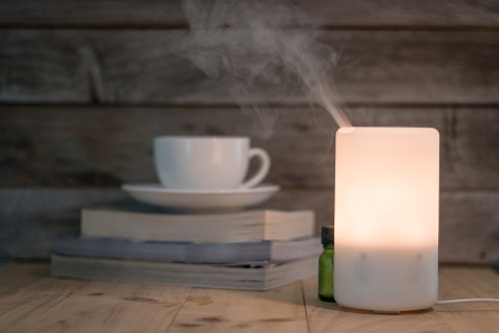
Warm mist humidifiers are also called steam vaporizers.
They are typically your cheapest alternative.
They use a heating component to boil water and make a warm mist to use more energy than cool mist versions.
However, if the temperature drops, you might prefer to have a warm mist running on your home rather than a cool one.
Warm mist models can make your nasal passages swell and make breathing more difficult though. So, they shouldn’t be used to ease cold symptoms, according to the FDA.
We advise against having a warm mist humidifier around kids because the humidifier tank contains hot water, which can burn the skin if the humidifier tips flow or over. Most warm mist humidifiers range from $15 to $260.
The Best Humidifier for Your Room Size
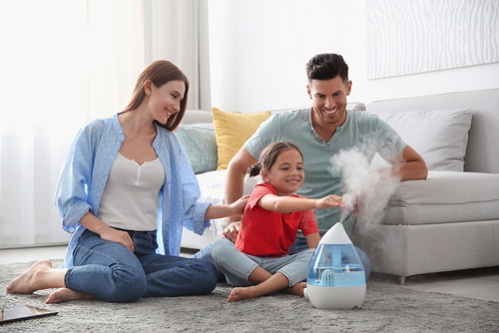
To determine the humidifier size you require, measure the square footage of the space.
The humidifiers in our evaluations are coordinated from the area size or area they are intended for.
From private humidifiers that can humidify up to 25 square feet to all the way with consoles 1,000 square feet or longer.
For small to medium rooms, tabletop units are the most affordable option, but their small tanks need frequent refills.
For larger spaces, console versions are best since they generate plenty of moist air.
Since they’ve got larger water tanks, they need fewer refills.
But due to their size and weight when they are full, they can be awkward to maneuver.
Humidifier Shopping Tips
Think about where this air will go.
You might choose to sidestep the legwork of figuring out the perfect humidifier for your room dimensions and only get the largest humidifier available.
Not a good idea. You’ll end up with a lot of moisture in the atmosphere, and that may breed dust mites and mold and cause allergic reactions to them, according to the Asthma and Allergy Foundation of America.
Get the humidifier with the moisture output for what you require.
Ease of use matters, too.
You want a humidifier that is easy to move, whether it is a table version or a floor model.
With evaporative humidifiers, check if the wick is simple and economical to change.
Also check how frequently you’ve got to replace it varies by design and how much you run the humidifier.
Start looking for user-friendly controls and visible displays of the humidity level and preferences.
A humidistat helps.
Nearly half of the humidifiers out there use a humidistat that shuts off the device when it reaches a set humidity level. Most are humidifiers intended for big rooms.
If your humidifier does not have one, purchase a hygrometer to track your room’s humidity level.
Consider how much cleaning is needed.
Some humidifiers are simpler to clean than others.
Generally, you want to drain, rinse, and dry the humidifier every day.
So follow the manufacturer’s general cleaning instructions.
Bacteria grow in a moist environment, so it is essential to clean your humidifier. Otherwise, a humidifier can release bacteria from standing water to the atmosphere.
This can possibly cause flu-like symptoms, especially in people who suffer from allergies or asthma.
Choose Warm Mist or Cool Mist (or Both)
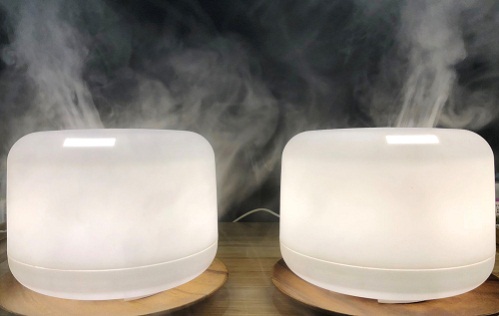
A warm mist humidifier, or a steam vaporizer uses power to create steam that cools before leaving the machine. Since the water is boiled until it enters the atmosphere, the mist is less likely to contain bacteria.
Start looking for “germ-free” warm mist humidifier technology in these components. This generally refers to nano-silver antimicrobial characteristics or built-in ultraviolet light that kill germs and allergens in the water until it is vaporized.
Cool mist humidifiers do not boil the water (they vaporize it), so they’re more energy-efficient and do not pose the aftermath risk and fire hazard issues of warm mist versions.
Cool mist humidifier technologies include impeller humidifiers, which release moisture using a high-speed rotating disc.
Ultrasonic humidifiers that emit moisture from ultrasonic vibrations.
The evaporative humidifiers use a fan to blow air through a wet wick, filter, or buckle. They do it to trap mineral dust and germs before the water evaporates into the atmosphere.
Some humidifier models include both cool mist and warm mist choices.
A model like this allows you to keep the room cooler in summer (when running, the air conditioning unit can dry out the air the same way the heater does) and warmer in winter.
Your physician may recommend warm or cool mist for you based upon your situation.
It is recommended to use a cool-mist humidifier in children’s rooms. Hot mist models may make the room stuffy, and they may be a hazard if they are left on around kids.
Keep a warm mist humidifier away from flammable substances and out of reach of kids.
Never put a steam vaporizer or warm mist humidifier on carpeting or other upholstered surfaces.
Regardless of the model you select, it helps if you clean it frequently. Otherwise, you run the risk of spreading germs and mold which can exacerbate allergies and asthma symptoms.
Choosing a newer model that includes built-in antibacterial technology to help keep the water clean so you don’t need to wash the device as often.
Also, pay attention to the moisture level of the space.
Some humidifiers automatically adjust their output depending on the moisture level, and others allow you to set the level manually.
Room humidity must be kept between 30 percent and 50 percent.
Again, you run the risk of rising mold and bacteria growth if you get too much.
I’m a degreed ME (mechanical engineer) who is passionate about machines of all kinds. I created MachineWonders.com as a way to connect with others who love machines like me – or need help choosing one for their needs, application, or situation.

